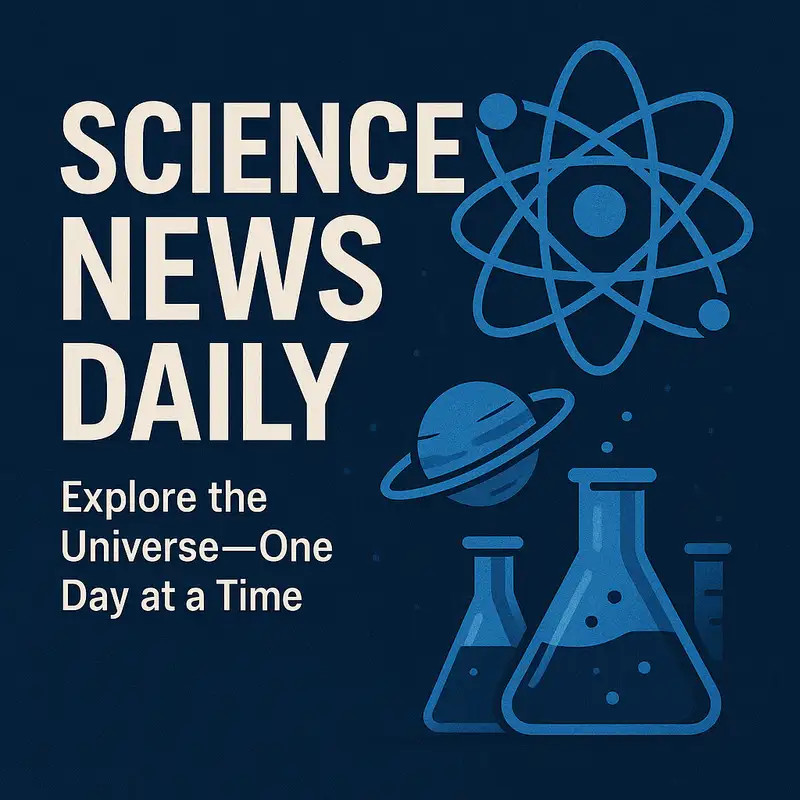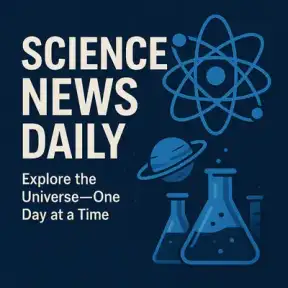🔬 Game-Changing Medical Transplant Success, Ancient DNA Secrets Unlocked, and Revolutionary Cancer Treatment That Spares Healthy Cells
Welcome to Science News Daily, your source for the latest discoveries shaping our understanding of the world. Today we're diving into some truly remarkable breakthroughs that could transform medicine, reveal ancient secrets, and even help us understand the very building blocks of life.
Let's start with a fascinating discovery about Alzheimer's disease. Scientists at Washington University have found that manipulating our body's internal clock might offer a new way to fight this devastating condition. By disabling a specific clock protein, researchers were able to shield the brains of mice from Alzheimer's effects. This research, published in Nature Aging, suggests that disrupting the connection between our circadian rhythms and brain function could slow neurodegeneration. It's a completely new angle on treating Alzheimer's that could open up entirely different therapeutic approaches.
Speaking of medical breakthroughs, we're witnessing history being made in the world of organ transplantation. For the first time ever, surgeons have successfully transplanted part of a pig liver into a living human patient. The patient survived for 171 days with the genetically engineered pig liver functioning alongside their own. Published in the Journal of Hepatology, this groundbreaking xenotransplant study provides crucial evidence that modified pig organs could help address the critical shortage of donor organs. It's a significant step toward making animal-to-human organ transplants a viable medical option.
Now here's something unexpected that might make you think twice about artificial sweeteners. Researchers have discovered that stevioside, a compound found in the stevia plant, could actually help regrow hair. The compound appears to boost how well the hair loss treatment minoxidil penetrates the skin. In laboratory studies, a stevioside-based patch successfully activated new hair growth in mice with alopecia. This could lead to more natural and effective treatments for the millions of people worldwide dealing with hair loss.
Turning to fundamental science, researchers have finally solved a decades-old mystery about photosynthesis. Scientists from the Indian Institute of Science and Caltech discovered why energy in plants flows down only one of two possible pathways. Using advanced computer simulations, they showed that one branch has a much higher energy barrier that blocks electrons from moving freely. This precision in nature's design helps explain how plants convert sunlight into energy with such remarkable efficiency.
In neuroscience news, there's encouraging research for people with ADHD. New studies reveal that the mind-wandering characteristic of ADHD might actually boost creativity. People who deliberately let their thoughts drift scored higher on creative tests in two large studies. This research suggests that with mindful management, what's often seen as a challenge of ADHD could actually be channeled into creative strengths.
Let's journey back in time now. Archaeologists in Italy have uncovered 400,000-year-old evidence that ancient humans were far more sophisticated than we might have imagined. At the Casal Lumbroso site near Rome, they found hundreds of elephant bones and stone tools with clear butchery marks. This reveals that our ancestors had consistent strategies for hunting massive prey and making tools from their bones during the Middle Pleistocene period.
From ancient history to cutting-edge technology, researchers have developed what they're calling a Google for DNA. This new tool called MetaGraph allows scientists to search through vast public DNA and RNA databases in seconds. Developed at ETH Zurich, this breakthrough could revolutionize genetic research by making it incredibly easy to find specific genetic sequences across massive datasets.
Finally, there's promising news in cancer treatment. Scientists have created a new light-based therapy that kills 92 percent of skin cancer cells while leaving healthy tissue completely unharmed. The treatment uses LED light and microscopic tin flakes to precisely target tumors. This approach could eliminate the painful side effects often associated with chemotherapy and other conventional cancer treatments.
That wraps up today's edition of Science News Daily. From manipulating our body clocks to fight Alzheimer's, to transplanting pig livers and solving ancient mysteries of photosynthesis, science continues to push the boundaries of what we thought possible. Keep that curiosity alive, and we'll see you tomorrow with more discoveries that are reshaping our world.

